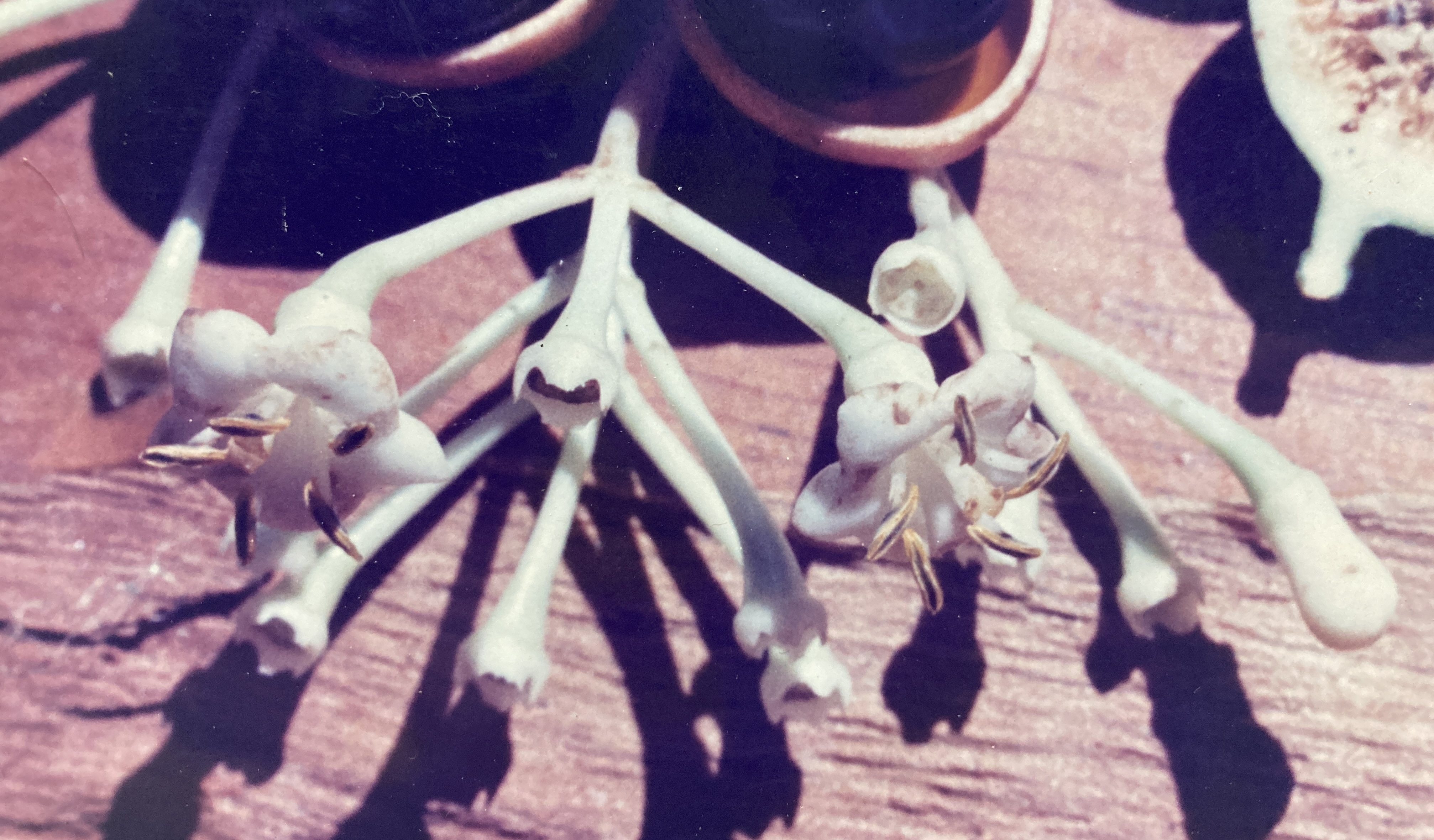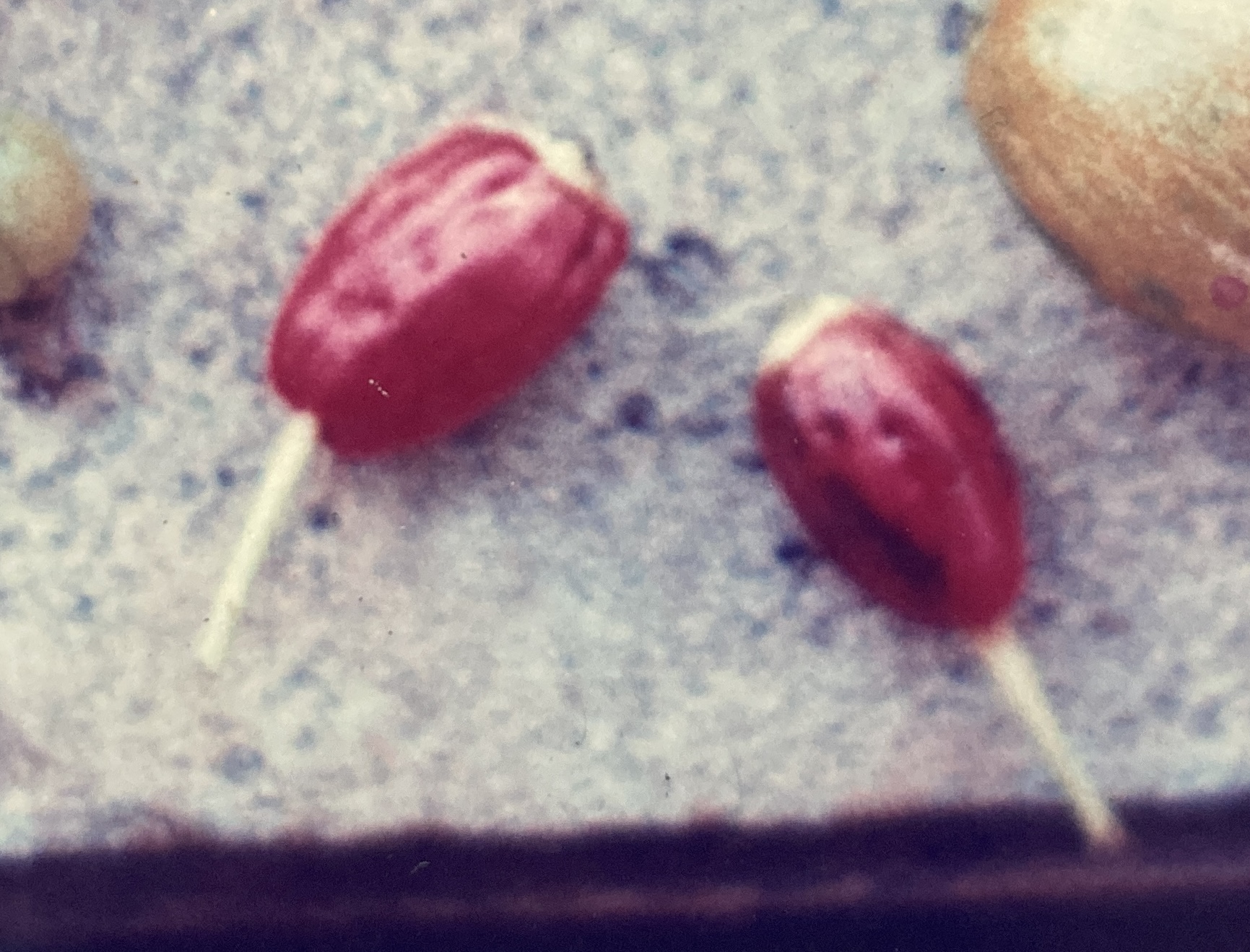Chione sylvicola (Standley) W.Burger & C.Taylor
Rubiaceae
FRUTA DE PAVA
Occasional, understory evergreen tree (10-15 m) most notable for the clusters of fragrant white flowers and highly persistent red fruits that are seasonally borne on branch tips. Chione is a very common component of the primary forest sub-strata in Punta Catedral, though it is not widespread in Manuel Antonio. The species grows best in the well drained soils of slopes and hills.
Description: Chione is a small tree, with individuals reaching a maximum diameter of only 25 cm. The trunk lacks buttresses and it is covered by smooth, light colored, whitish bark. Though often uniformly circular in cross-section and straight, irregular and bending boles are not uncommon. Branching occurs along the upper third of the tree’s length, and these limbs form a single-layered, umbrella-shaped crown.
Leaves are simple and oppositely arranged. Though large, blade dimensions are quite variable, ranging from 15-20 cm length and 6-10 cm in width. Glossy-smooth and dark green, the blades have a broadly rounded, elliptical shape, lack drip-tips and are supported by long petioles (1.5 cm). Newly emerging, flattened twigs, each sporting a pair of fresh leaves, appear terminally during October and November – initiating Chione‘s annual fertility cycle. Successive twig segments are rotated with respect to previous ones by ninety degrees – effectively staggering the placement of leaves along the branch.
Flowers appear in large (10 cm), pale, terminal panicles. Each white blossom (1 cm long by 1 cm in diameter) consists of a short tubular corolla that flares distally into a five-lobed trumpet. Five yellow-anthered stamens (attached to the corolla) and a shorter pistil (with a two-part, leaf-like stigma) are located inside. A minutely-lobed, disk-like calyx supports the bloom. Chione flowers emit a strong, sweet, perfumey smell that is successful in attracting many insect pollinators. Flowering periods are poorly synchronized between individual trees in this species, but blossoms are most abundant in December and January.
Fruits (2 cm by 1 cm) first appear as elongate, somewhat shriveled, green or greenish-white drupes clustered in racemes and hanging from branch tips. Eventually becoming plump and juicy, they turn a deep scarlet red color when ripe. Each carries a single seed. The dark forest green of Chione foliage, combined with the intense red of these fruits, creates an eye-catching display of Christmas-like color during harvests. Consistent in timing and size, harvests occur over an extended period, from April through June.
Similar Species: Eugenia acapulcensis and Posoqueria latifolia (see descriptions) are trees of comparable stature, foliage characteristics, and habitat preferences. However, Eugenia‘s foliage is only half the size of Chione‘s, and its bark is darker and exfoliating. More difficult to distinguish, Posoqueria is usually a smaller tree with a compact, dense crown and very thick, waxy leaves. When present, the flowers and fruits of both Eugenia and Posoqueria are very different from those of Chione.
Natural History: Strong-smelling and perfumey, Chione flowers attract a wide variety of insects and are particularly heavily visited by bees, flies, and butterflies. Fruits are probably dispersed by arboreal mammals and large birds.
Uses: Allen (1956) sites a species named Chione costaricense as being present in the Golfito area, and he attributes to it characteristics similar to those of Chione sylvicola. He says that this tree has hard, white wood that has been used in making ax handles.
Distribution: In Manuel Antonio National Park (MANP), Chione is largely confined to Punta Catedral, where it is a ubiquitous component of the understory vegetation. In Costa Rica, Chione is also known from the Osa Peninsula. The species ranges from southeast Nicaragua to Panama.





